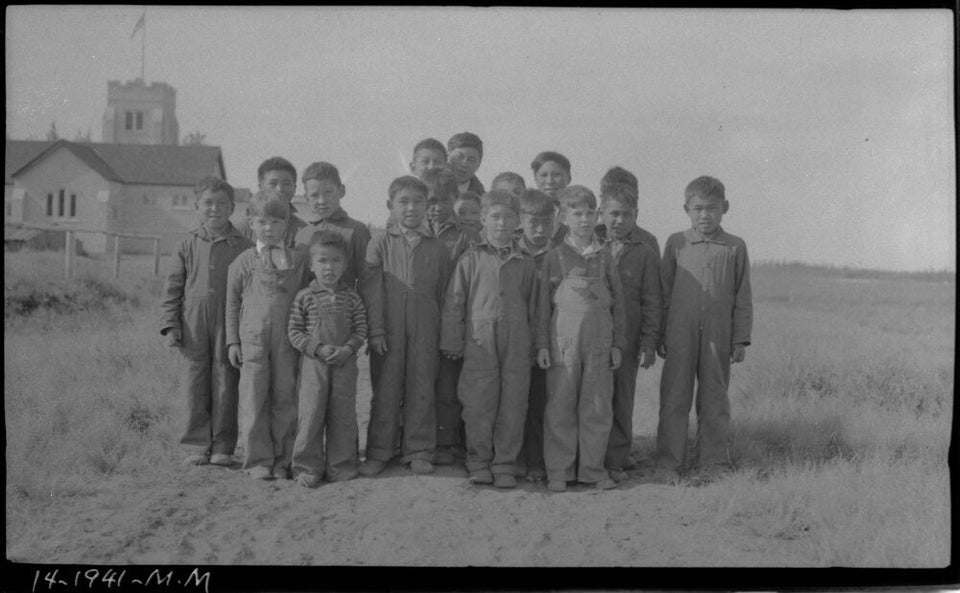The repulsive St. Anne's Indian Residential School at Fort Albany is again in the news. Ontario's Superior Court Judge Paul Perell has ruled that files in the possession of the Ontario Provincial Police, related to their investigation of crimes at this institution, should be turned over to the courts.
These files are critical to the advancement of a case involving former school inmates. The term inmates, by the way, was in fact used by Indian residential school staff in the late 19th and early 20th centuries: people were less circumspect in those days. Here's a direct quote from an Indian Affairs Annual Report of December 31, 1888:
"Of the children who formerly attended the now abandoned day school on Little Child's Reserve, No. 73, at Crooked Lakes, 27 have become inmates of the industrial school at Fort Qu'Appelle, and 34 of the semi-industrial boarding-school at Round Lake."
Closer to our own day, the Globe and Mail reported on October 21, 1996 on the now infamous electric chair kept in St. Anne's basement for the purposes of entertaining the sadistic nuns and priests and furthering the cause of discipline through terror.
Perhaps crimes like this are why, as researcher Ed Sadowski discovered, the federal government of Canada took to deliberating destroying the schools' records in 1937, and kept the work going for the better part of four decades.
This was part of the later circumspection to which I alluded. And I had noticed it too: how the paper trail suddenly attenuates even as the schools were multiplying in number. Sadowski also filed an access to information request, which was only partly successful. This request pursued "all communications, correspondence, research, reports, minutes and documents pertaining to the Preliminary Report on the Investigation into Missing School Files."
Ed Sadowski would later conclude that "your government, the government of Canada, has interfered in every aspect of this settlement process," referring to the 2006 Indian Residential School Settlement Agreement.
The cruel irony of the settlement was that the experiences of former inmates and victims of rape and beatings, and other kinds of cruelty, would be validated by -- you guessed it -- government records. Many applied for the "Common Experience Payment" (compensation, so far as such a thing is possible) only to be told no record of their time in the school could be found.
Canadians have learned a good deal about the Indian Residential School System, and much of what is not today known may never be known, precisely because the records are gone. In the late 19th and early 20th centuries, detailed statistics were kept: the number of children enrolled, the number attending, the frequency and types of diseases, the number and circumstances of deaths, and so on.
The Department of Indian Affairs, in the last quarter of the 1800s, introduced an "outing system" which was intended to control and direct the lives of students after they left the school. The culmination of this effort was the internationally known File Hills Colony, in Saskatchewan, run by the Indian Commissioner W.H. Graham. The point is, keeping files on Indians was a keen interest of the government. And it still is, as Cindy Blackstock can tell you.
There may never be a final and definitive answer to basic questions such as "how many children attended a residential school in total?" or "how many, and who, died in the schools?" As the Chief Medical Inspector of Indian Affairs, P.H. Bryce, showed as early as 1907, the Department was manipulating the records to avoid incrimination -- for example, by sending the terminally sick children home, so that their deaths from poor school sanitation and sub-par nutrition could be charged to the account of the families or, more common, ignored entirely by the administration.
The absence of records, through a combination of active destruction and accidents, will forever undermine the truth component of truth and reconciliation. What we do however have is the ample and rich experiences of living aboriginal people, and it is on these experiences and these voices that most of my own work has been based. I encourage you if you have never done so to seek out and talk to survivors of the Indian residential schools, from First Nations, Inuit and Métis communities across the country. They won't be around forever, and once gone they will be as inaccessible to you as the records your government never wanted you to see.
